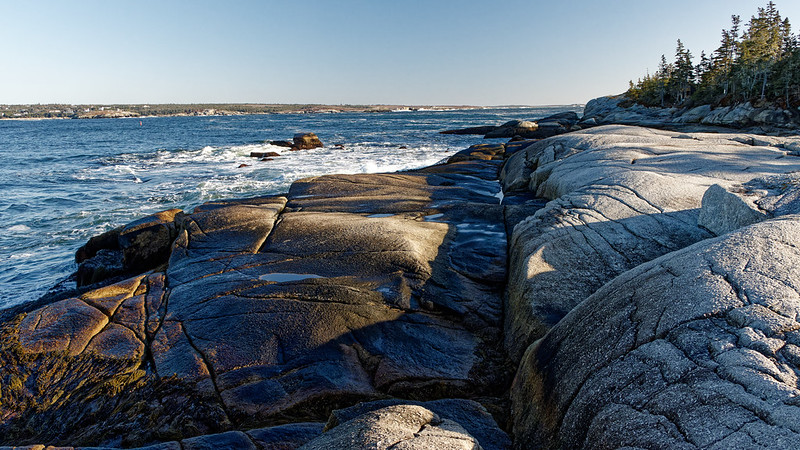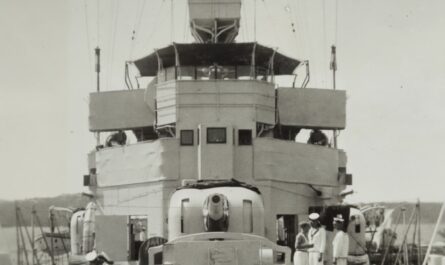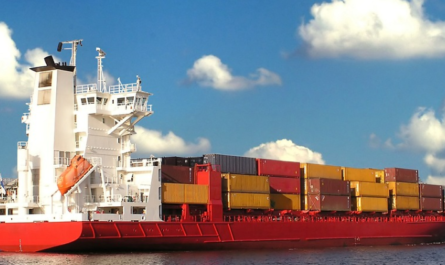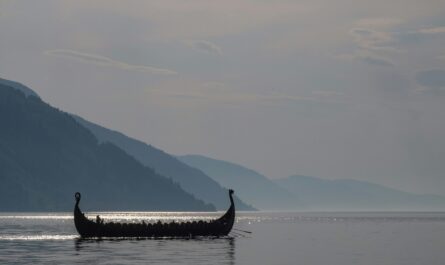The Atlantic Ocean, a vast and seemingly endless body of water, has been at the heart of some of the most transformative events in human history. For centuries, it stood as a barrier between the Old World of Europe, Africa, and Asia, and the unknown lands that would eventually come to be called the New World. The Age of Exploration, which spanned from the 15th to the 17th centuries, marked a period when this once-feared ocean became the pathway to discovery, trade, and conquest.
The bold voyages of explorers like Christopher Columbus and Ferdinand Magellan across the Atlantic not only opened up new geographical horizons but also changed the course of world history. This era of exploration led to the establishment of new trade routes, the colonization of vast territories, and the exchange of goods, cultures, and ideas—an exchange that would have a lasting impact on societies around the world.
This article delves into the Atlantic’s critical role in the Age of Exploration, focusing on the pioneering voyages of Columbus and Magellan, the technological advances that made such journeys possible, and the profound consequences of these explorations for both the Old and New Worlds.
The Atlantic as a Barrier and a Gateway
Before the 15th century, the Atlantic Ocean was often viewed by Europeans as an insurmountable obstacle. While coastal trade routes around the Mediterranean and overland routes like the Silk Road connected Europe to parts of Africa and Asia, the vast Atlantic Ocean remained largely uncharted. Sailors feared its unknown waters, and myths about sea monsters and endless voids beyond the horizon kept most from venturing too far.
However, the rise of powerful European nations, advancements in maritime technology, and the allure of wealth and new trade routes prompted a change in attitude. Nations like Spain and Portugal, driven by the desire for new markets, access to luxury goods like spices, and the spread of Christianity, began to see the Atlantic as a gateway rather than a barrier. This shift in perspective would set the stage for some of the most iconic voyages in history.
Christopher Columbus and the “Discovery” of the New World
Perhaps the most famous figure of the Age of Exploration is Christopher Columbus. Born in Genoa, Italy, around 1451, Columbus became convinced that the Atlantic Ocean could be crossed to reach Asia, a land fabled for its wealth of spices, silks, and gold. At the time, European traders typically reached Asia via long and treacherous overland routes or through the Mediterranean Sea, controlled by the powerful Ottoman Empire. Columbus believed that a westward sea route across the Atlantic would provide a faster and more direct path to the riches of the East.
After years of lobbying, Columbus finally gained the support of the Spanish monarchs, Queen Isabella and King Ferdinand, who agreed to finance his voyage. On August 3, 1492, Columbus set sail from the port of Palos de la Frontera with three ships: the Nina, the Pinta, and the Santa Maria. His goal was to find a new route to Asia by crossing the Atlantic.
After more than two months at sea, on October 12, 1492, Columbus and his crew landed on an island in the Caribbean, which he named San Salvador (modern-day Bahamas). Although Columbus believed he had reached the outskirts of Asia, he had, in fact, stumbled upon a landmass unknown to Europeans: the Americas.
Columbus made four voyages across the Atlantic, exploring parts of the Caribbean, Central America, and South America. While he never realized that he had discovered a “New World,” his expeditions set off a wave of European exploration and colonization that would reshape the globe. Spain quickly established a colonial empire in the Americas, and other European nations followed, vying for control of these newly discovered lands.
The Columbian Exchange
One of the most profound consequences of Columbus’s voyages was the initiation of the Columbian Exchange, a massive exchange of goods, people, plants, animals, and ideas between the Old and New Worlds. This exchange had lasting impacts on both sides of the Atlantic. Europeans brought crops like wheat, sugar, and grapes to the Americas, while the New World introduced Europe to crops such as maize (corn), potatoes, and tomatoes, which would become staples in European diets.
However, the Columbian Exchange also had darker aspects. European diseases, such as smallpox and measles, devastated indigenous populations in the Americas, who had no immunity to these new pathogens. Additionally, the transatlantic slave trade, which saw millions of Africans forcibly transported to the Americas, would have tragic and lasting consequences for African societies and the New World alike.
Ferdinand Magellan and the First Circumnavigation of the Globe
While Columbus’s voyages opened the door to the Americas, Ferdinand Magellan would go on to achieve another monumental feat: the first circumnavigation of the globe. Magellan, a Portuguese explorer sailing under the Spanish flag, was determined to find a westward route to the Spice Islands (the Moluccas) in modern-day Indonesia. At the time, control of the spice trade was one of the most lucrative ventures in the world, and Spain sought a direct route to these islands without having to go around Africa, as the Portuguese had done.
In 1519, Magellan set sail from Spain with five ships—the Trinidad, San Antonio, Concepción, Victoria, and Santiago—and a crew of more than 270 men. His journey would be one of the most arduous and dangerous in the history of exploration.
Crossing the Atlantic and the Search for the Strait
Magellan’s first task was to cross the Atlantic and reach the southern tip of South America, where he believed there would be a passage to the Pacific Ocean. After months of navigating the treacherous waters of the South American coast, Magellan’s expedition discovered what is now known as the Strait of Magellan, a narrow passage at the southern tip of the continent that connects the Atlantic and Pacific Oceans. This strait, with its unpredictable winds and dangerous currents, was one of the most challenging parts of the voyage, but it provided a critical shortcut for reaching the Pacific.
The Pacific Crossing and Magellan’s Death
After navigating the strait, Magellan’s expedition entered the vast and largely uncharted waters of the Pacific Ocean. The crossing was brutal. The crew faced extreme hunger, scurvy, and dehydration as they spent more than three months at sea without sight of land. Despite these hardships, the expedition finally reached the islands of Guam and later the Philippines in 1521.
Tragically, Magellan did not live to see the completion of his journey. While in the Philippines, he became involved in a local conflict and was killed in battle. Leadership of the expedition fell to Juan Sebastián Elcano, who managed to continue the journey. The expedition eventually reached the Spice Islands and returned to Spain in 1522, with just one ship, the Victoria, and 18 surviving crew members. They had completed the first circumnavigation of the globe.
Magellan’s Legacy
Magellan’s voyage was a monumental achievement, proving that the Earth could be circumnavigated and offering valuable knowledge about the geography of the world. His expedition also demonstrated the vastness of the Pacific Ocean and revealed the true scale of the planet. While Magellan himself did not complete the journey, his leadership and vision were critical to the success of the expedition.
Magellan’s circumnavigation further solidified the Atlantic’s role as the gateway to global exploration. His discovery of the Strait of Magellan provided future explorers and traders with a crucial maritime route that linked the Atlantic and Pacific Oceans, allowing for more direct and efficient global trade.
The Technological Advancements That Made Exploration Possible
The success of these voyages across the Atlantic would not have been possible without significant advancements in maritime technology. The Age of Exploration saw the development of new tools and ships that allowed European sailors to venture farther into the Atlantic than ever before.
1. The Caravel
One of the most important innovations of this period was the development of the caravel, a highly maneuverable ship with a shallow draft that allowed it to sail close to shore and navigate through difficult waters. The caravel’s design, with its lateen sails (triangular sails that could be angled to catch the wind more effectively), made it ideal for long-distance exploration. This ship was essential for both Columbus’s and Magellan’s voyages.
2. The Astrolabe and Compass
Navigating the vast, featureless ocean required new tools for determining location and direction. The astrolabe, an ancient device adapted for maritime use, allowed sailors to calculate their latitude by measuring the angle of the sun or stars above the horizon. Combined with the magnetic compass, which provided a reliable sense of direction, these tools gave explorers the confidence to venture farther from familiar coastlines.
3. Cartography
The art and science of cartography (mapmaking) advanced significantly during the Age of Exploration. As explorers charted new territories, their findings were recorded and shared, allowing future expeditions to build upon their discoveries. The creation of more accurate maps helped to demystify the Atlantic and its surrounding lands, making future voyages less perilous and more profitable.
The Consequences of the Age of Exploration
The Age of Exploration, made possible by crossing the Atlantic, had far-reaching consequences that continue to shape the world today.
- Colonial Empires: European nations, particularly Spain and Portugal, established vast colonial empires in the Americas, Africa, and Asia. These empires brought enormous wealth to Europe but also led to the exploitation and displacement of indigenous populations.
- Global Trade Networks: The Atlantic became a key artery in the global trade networks that connected Europe, Africa, the Americas, and Asia. Goods such as silver, sugar, spices, and slaves were traded across the Atlantic, transforming economies and societies on both sides of the ocean.
- Cultural Exchange: The interactions between Europeans, indigenous peoples, and Africans during this period resulted in significant cultural exchange. European languages, religions, and customs were introduced to the Americas, while New World crops and resources flowed into Europe. However, this exchange was often unequal and marked by violence and oppression.
- The Atlantic Slave Trade: One of the most tragic consequences of the Age of Exploration was the establishment of the transatlantic slave trade. Millions of Africans were forcibly transported across the Atlantic to work in the plantations and mines of the Americas, a practice that would have lasting social, economic, and cultural impacts on both continents.
Conclusion: The Atlantic’s Lasting Legacy in Exploration
The Atlantic Ocean, once feared as an impassable barrier, became the launching point for some of the most significant explorations in human history. The voyages of Columbus and Magellan transformed the Atlantic into a highway of discovery, connecting distant lands and peoples and setting the stage for the modern world.
The Age of Exploration not only expanded human knowledge of geography and navigation but also reshaped global trade, politics, and culture. While the consequences of this era were often destructive, particularly for indigenous populations and African slaves, the opening of the Atlantic fundamentally altered the course of history, and its legacy continues to be felt today.



